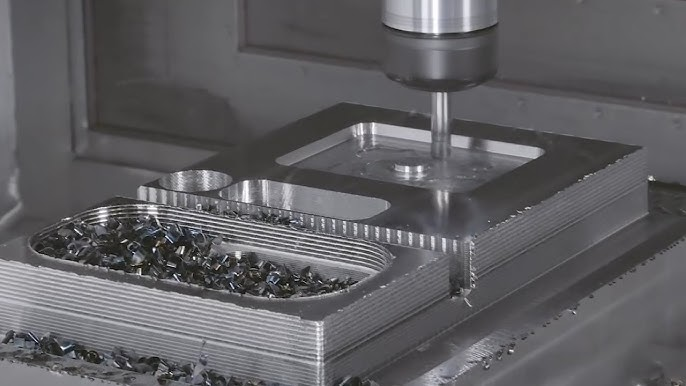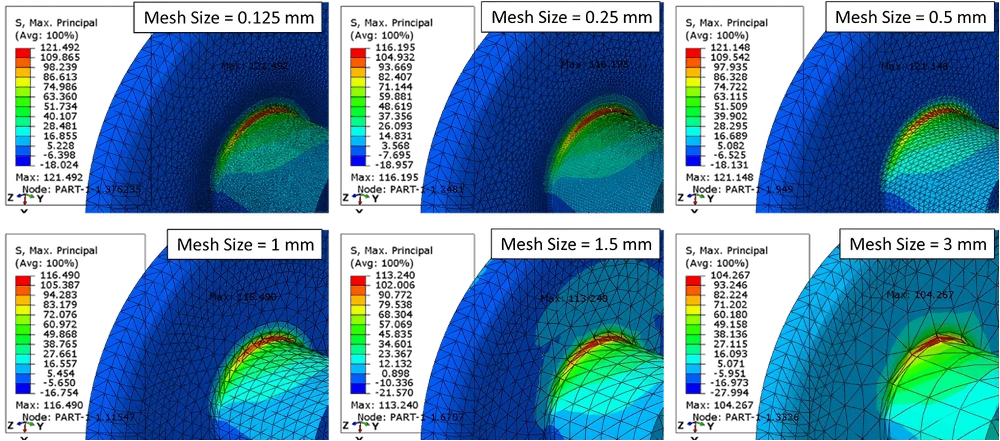1.0 Introduction
An analysis of bronze and copper is essential since these metals are easily confused. As a result, part designers may become perplexed during material selection. Moreover, the similarities in these metals' elemental composition make categorization much more challenging. Although there is a little color variation, you may not be able to tell the metals apart right away. The most difficult element is that you cannot select just one of them for your applications. Despite their numerous commonalities, they also have several distinguishing characteristics. As a result, brass may not be suited for some applications where copper would ordinarily be used.
1.1 What is Copper?
It's one among the most often utilized non-ferrous metals in manufacturing. With a reddish-brown hue, it's a soft, malleable, and ductile substance. Due to its outstanding electrical and thermal conductivity, strength, formability, and corrosion resistance, copper is employed in a wide range of applications. Unalloyed Copper is available in a variety of grades, each with varying levels of impurities. Copper grades that do not contain oxygen are utilized in applications that need good conductivity and ductility. Copper’s capacity to resist germs is another one of its most essential features.

1.2 What is Bronze?
Bronze is one of the world's oldest metals. It’s a copper-based alloy with a secondary metal, generally tin. Bronze is distinguished by its dull-gold hue. The composition of contemporary bronze varies, but typically is 88% copper and 12% tin. Manganese, aluminum, nickel, phosphorus, silicon, arsenic, and zinc are all possible components of bronze. Although bronze was formerly an alloy of copper and tin, and brass was an alloy of copper and zinc, current use has blurred the distinction between the two. Copper alloys are now commonly referred to as brass, with bronze being considered a kind of brass.

2.0 Differences Between Bronze and Copper.
Some methods for distinguishing copper and bronze are listed below.
2.10 Composition of Elements
Copper is an element that comprises wholly of that element. However, contaminants or traces of other elements may occasionally be present. Bronze, unlike copper, is an alloy with a basic elemental makeup of copper (Cu) and tin (sn). Other elements, depending on the alloy form, are present in addition to the basic composition.
2.12 Copper and Bronze Strength Differences
The strength of a material is critical in determining the best applications for it. As a result, when comparing bronze with copper, this component must be taken into account.
- Yield Strength
The yield strength of bronze is greater than that of copper. It has a yield strength ranging from 125 to 800 MPa.Copper, on the other hand, has a yield strength of 33.3 MPa.
- Tensile Strength
In applications where metal strength is required, bronze is typically the best option. Copper has a tensile strength of 210 MPa, while bronze has a tensile strength ranging from 350 to 635 MPa.
2.13 Differences in Conductivity
1. Electrical Conductivity
In the manufacturing business, copper is one of the materials used to rate electrical materials. As a result, copper has a conductivity of 100%. The electrical conductivity of bronze is around 15%. It’s possible that bronze's lower ratings are attributable to the makeup of its alloying elements.
2. Thermal Conductivity
It's a gauge for how well copper and bronze perform in thermal applications. The quantity of energy and rate at which the energy may be transported are measured during the measurement of their thermal conductivity. The thermal conductivity of alloys increases with temperature, whereas the thermal conductivity of pure metals remains constant as temperature rises.. Bronze, on the other hand, is a copper alloy, whereas copper is in its pure form. Copper has the lowest thermal conductivity (223 BTU-in/hr-ft2-°F), whereas bronze has the greatest (229 – 1440 BTU-in/hr-ft2-°F).
2.14 Forming Capabilities
- Formability
Copper has great formability because it can withstand plastic deformation without being damaged. Some bronze alloys may also be easily shaped. PB1 phosphor bronze, which allows for cold forming, is an excellent example.
- Melting Point
A material's formability increases as its melting point decreases. The melting temperature of copper is 1085 °C, which may limit its formability. The melting point of bronze, on the other hand, is 913 °C
2.15 Aesthetic appeal and Touch
- Color
Both metals are reddish-brown in color. Bronze’s reddish-brown tint is distinguished by a dull gold, but freshly exposed copper is distinguished by a pinkish-orange tone.
- Hardness
Copper has a Brinel hardness rating of 35. Bronze, on the other hand, has a score ranging from 40 to 420.This demonstrates that bronze is harder than copper.
2.16 Corrosion Resistance
When exposed to air, bronze oxidizes and develops a protective coating. Bronze can tolerate exposure to seawater. Therefore, it's ideal for maritime applications and boat fittings. The copper content of this metal, on the other hand, diminishes over time when exposed to chlorine chemicals. Copper oxidizes to generate a protective layer that provides high corrosion resistance. To summarize, bronze is inherently more corrosion resistant than copper.
2.17 Durability
Materials that are long-lasting must be able to adapt to technological, technical, and design changes. As a result, bronze is a durable and robust substance that does not readily bend. It is also extremely durable due to its great corrosion resistance. Copper, on the other hand, has a lot more elasticity than bronze. As a result, bronze is a significantly stronger and longer-lasting alternative than copper.
2.18 Weight
Bronze is the lightest of the two materials, with a density ranging from 7400 to 8900 kg/cu.m.Copper, on the other hand, has the highest density, with a density of 8930 kg/cu.m.
2.19 Machinability
Copper is more machinable than bronze. This can be ascribed to bronze's hardness. Bronze is a hard, dense metal that is difficult to stretch when contrasted to copper, which is extremely flexible. If machinability is a priority when choosing between bronze and copper for a project, copper is without a doubt the best option.
2.20 Costs
Bronze and copper are frequently available in various grades. As a result, their cost frequently fluctuates. Copper is normally more expensive than bronze, despite the fact that costs vary depending on the alloy. The reduced copper percentage in the alloy might be to responsible for the lower bronze pricing.
3.0 Applications of Copper and Bronze
I. Bronze
Bronze is a copper alloy that comes in a wide range of shapes and sizes. It may be found in a wide range of applications including:
i. Machine Design
Bronze is used in several bearings because of its superior friction resistance, hardness, and wear resistance. As a result, they're employed in springs, bushings, pilot bearings for automotive transmissions, bearings for tiny electric motors, and a variety of other applications.

ii. Construction
A special form of bronze is used in several moveable bridge components, worm drive wheels, and bridge turntables. A form of bronze is also used in modern safety equipment including hammers, mallets, and wrenches.
These tools were originally constructed of steel, but bronze was substituted due to the risk of fire or explosion generated by the dangerous sparks that steel can produce.
iii. Arts
Because of its wonderful feature, which allows it to gently expand as it cools down, it is the material of choice for metal sculptors. Bronze, despite its weight and density, is very easy to work, allowing sculptors to carve to their hearts' content.
Bronze is also used in musical instruments
II. Copper
- Wire & Cable
Copper is the most desirable electrical conductor in this area since it has a conductivity rate of 100%. Copper is used in electrical wire; however, it is not recommended for power transmission overhead.
Transmission, distribution, power generation, communications, electronics, and a wide range of electrical devices are all examples of where it is used.

- Electronics
Electromagnets, cathode ray tubes, vacuum tubes, microwave magnetrons, and many other applications are possible.
- Antimicrobial
Copper's antibacterial properties are very outstanding. It may be turned into alloys with antibacterial properties. Escherichia coli is one of the germs it can protect against. Over-bed tables, health club equipment, toilet hardware, sinks, shopping card handles, and other parts constructed from this copper alloy are commonly utilized in the public health sector.
- As an anti-biofouling agent
Copper is used to restrict the growth of many types of life, and it is considered to be biostatic. For its biostatic properties, copper is used to line ship components to protect them from barnacles and mussels. Copper has strong antibacterial properties; thus, it's frequently utilized in the production of netting materials to avoid biofouling.
3.1 Choosing between Brass and Copper
In the design and production stages, the selection procedure is crucial for high-quality output. The following variables should be considered while deciding between copper and bronze.
- While both metals are more durable, they do not have the same level of machinability. This is something you should think about if you want to assure smoother machining and lower costs.
- Another significant factor is the budget. Copper is more expensive than bronze. As a result, if money is an issue, bronze could be the way to go.
- Finally, consider applicability and utility while making your decision. The type of metal you select will be determined by the component's final purpose. Copper is advantageous anytime electrical conductivity is required. The corrosion resistance of bronze makes metal ideal for use in marine settings. It’s also tough and resilient, and it can bear wear and tear.
4.0 Conclusion
Choosing the incorrect metal for a project may be fatal, so knowing the difference between bronze and copper can help you save a lot of money. The finest metal between copper and bronze, however, depends on your project's requirements. Seek expert counsel if you're unsure about the best course of action.







